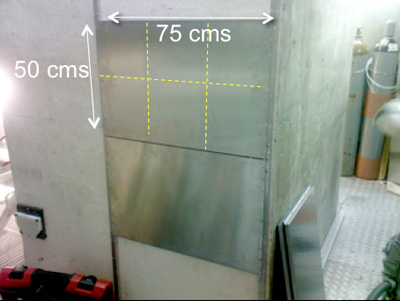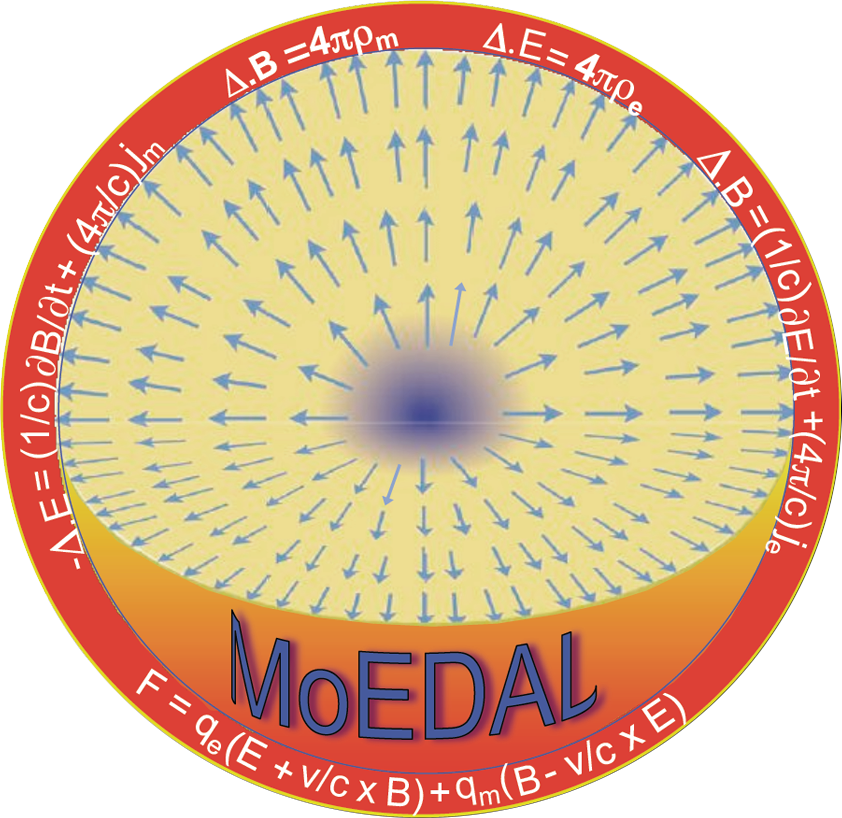The detector mounting system is comprised of a set of aluminium rails onto which the aluminium detector housings can be screwed. The mounting rails are cut to length and have cross-section 2.5 cm x 1.9 cm (deep). They are pre-drilled with two sets of holes: attachment holes that enable the rail to be attached to the concrete, in this case we have a hole for every metre of rail; and, a second set of holes, drilled every 10 cm that are used for attaching the detector housing to the frame, using M4 screws through each corner of the housing. The rails are mounted using “ Hilti” 3/8” inserts with 1/4” (diam.) screws. Each mounting point is rated to take a load of 200 Kg.

After the detectors have been mounted in their various housings their position is fixed with respect to the rigid wall mounted MoEDAL framework. The position of the framework on each surface of the VELO cavern is recorded by survey marks attached to at least two detector housing attached to that framework. The accuracy of the registration of a highly ionizing track in a stack combined with the accuracy with which we can place the track in the space, allows us point this track from its position near to the VELO wall, or ceiling, back to the LHCb IP with an accuracy of ∼ 1 cm.
It is envisaged that the Phase1 the installation of the full detector will take around 4 working days. First, the rail mounting described directly above, will be attached to the wall. The detector assemblies that are 2.5 cm deep, measure 50 x 75 cm and weigh about 8 kg when full of detectors, will be attached to the rails by M4 screws. These assemblies look like flat shallow aluminium boxes.
